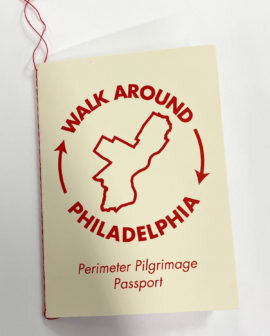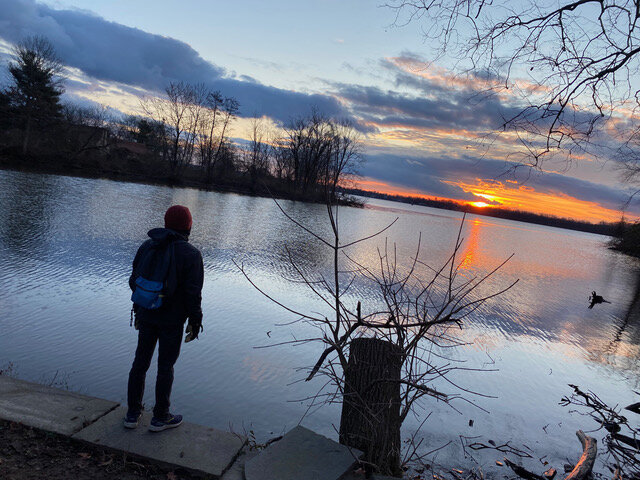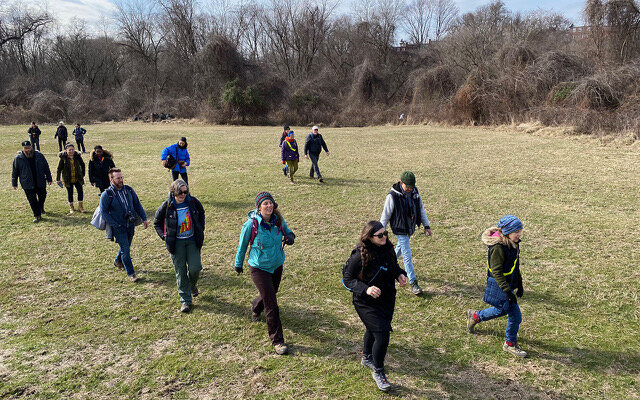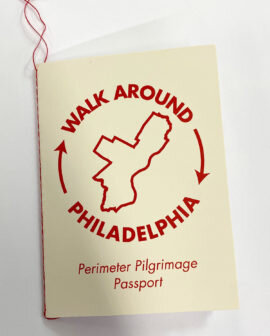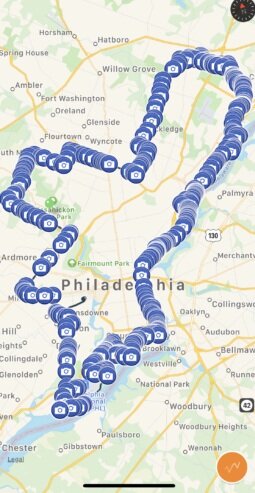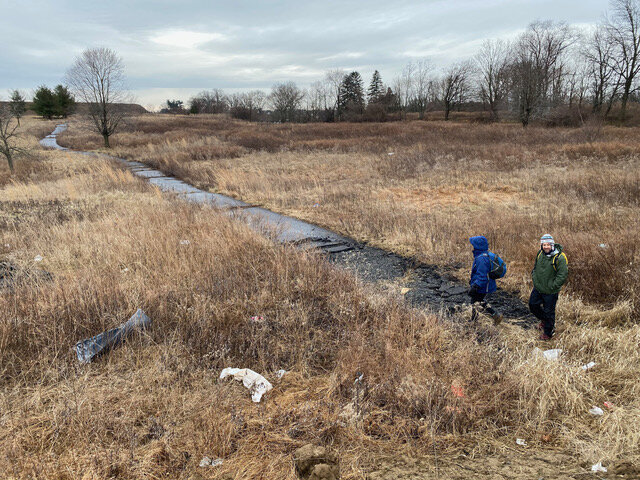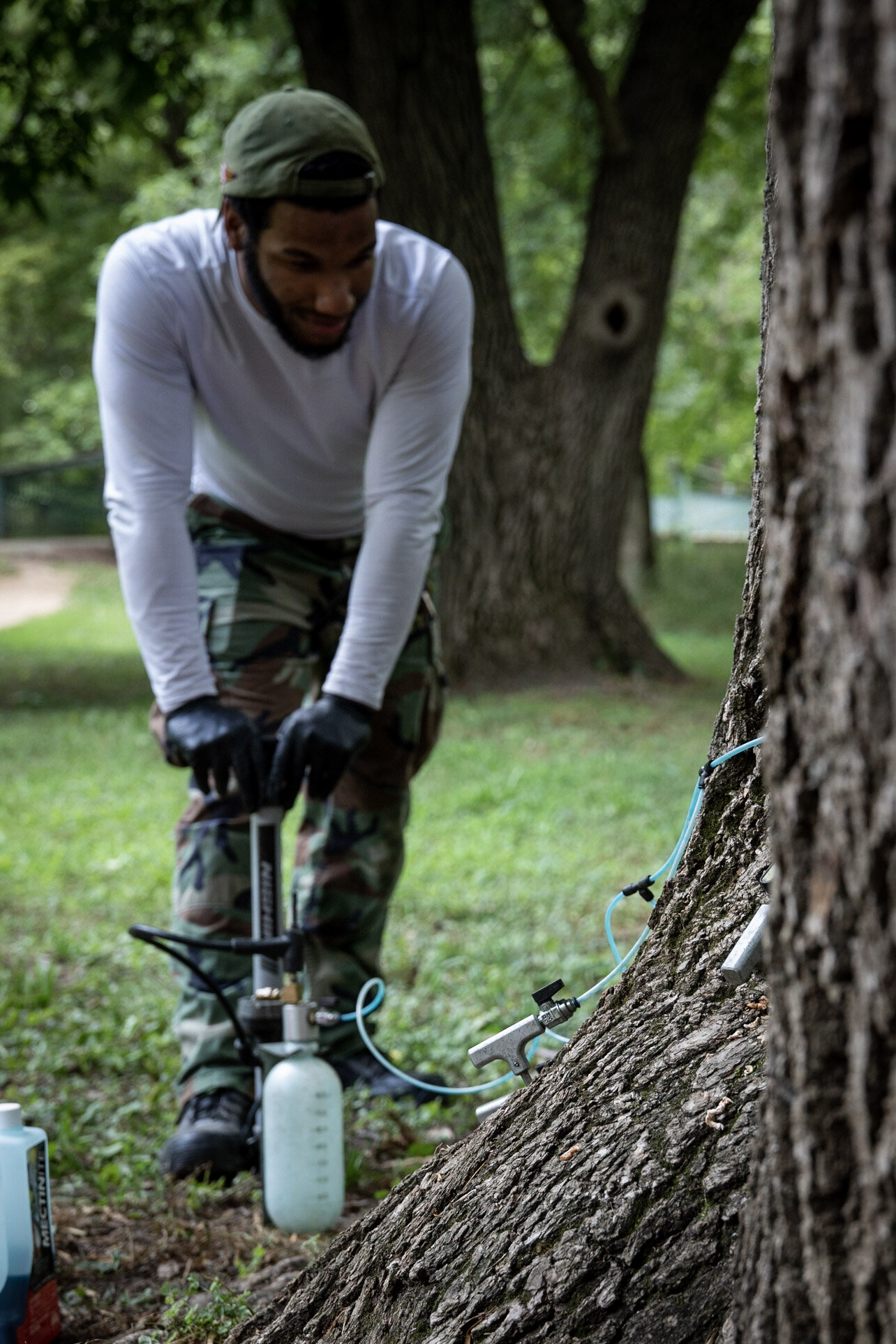It’s no secret that the COVID-19 pandemic has radically impacted how festivals operate in 2020—but at least one artist, Jacques-Jean “JJ” Tiziou, is taking advantage of the shift.
For the 2020 Philadelphia Fringe Festival, he’s bringing a socially-distanced outdoor experience to the table: a walk around Philadelphia’s perimeter.
Born from a 2016 collaboration with Ann de Forest, Adrienne Mackey and Sam Wend, Walk Around Philadelphia has functioned as an annual five-and-a-half-day personal pilgrimage the last few years. This is the first time it has been offered outside of February.
Tiziou himself has been invested in the Fringe Fest since 2003 and is excited to be coming back this year with his own project,“which is literally an invitation to the fringes of the city,” he says.
Tiziou took some time to answer our questions about the event. This interview has been edited for length, clarity and style.
This project has become an open invitation for anyone to explore the fringes of Philadelphia. Can you talk about what that entails?
When you think “tour of Philadelphia,” you don’t think of the outer perimeter.
One experience that we’ve reflected on over and over again is that the first time we were walking on the far northern edge of the city, we caught a glimpse of the skyline in the distance, and thought instinctively, “Oh, there’s Philly.” Our biased idea of the city is its skyscraper-dense downtown core.
But then we checked ourselves and were like, “Oh no, we’re on the border. We’re on the perimeter. So, this right here at our feet, and everything to our right—this is Philadelphia. And everything to our left over there is not Philadelphia.” It’s an interesting game to play as you walk along to see the differences, it looks all the same, and there’s this totally arbitrary line of what is Philadelphia and what is not Philadelphia.
It’s a shift from thinking of the city from this sort of center-centric model to a borders-and-all-that-it-encompasses model, and the humility that kind of comes with understanding the vastness and complexity of the city.
The invite is for people to discover the real perimeter of the city. This project will involve people following some guidelines, forming some groups, picking up a packet of supplies from my porch, going off and then reporting back.
Previously, this walk has taken place in February, correct?
It’s been February every year. The first year, I had one of the most joyous weeks of my life, so I thought, “Maybe I’ll do this again next year as a personal kind of contemplative, reflective period.” But the next year, my dad was getting sick and I didn’t think I’d be able to do it. Then he passed away really suddenly and I had the following week wide open, and the only thing on the calendar said “walk.” So, in the aftermath of his death, I went off and did a solo version of it, with some friends who joined me on the last half-day leg.
It was such a gift of time and space to do it alone, to have time to sort of process an intense period of family health stuff.
At that point, I’d done it twice, so I was like, “Well, I guess I’ll do it again next year, put it on my calendar. This past year was the fifth year, and I threw the invite open a little bit more broadly as sort of a public RSVP. In the last half day, I had 20 people following me out of the airport, which was kind of amazing.
Could you talk a little bit more about the walking kits that participants will receive? After they register, how do they receive the kit and begin their journey?
The kits will be available for pickup from my porch in late August.
Inside are passports being made by the folks at Fireball Printing, who are great. They’re stitched with red thread and really lovely objects. The maps are the basic, laser-printed kind. I’ve hidden a couple little hints—there’s one for each leg of the journey. There’s a couple little treasures that I will highlight on the map, vaguely from my own experience of this walk, but part of it is that I’m not providing turn-by-turn directions.
One thing I’m really trying to stress is that part of this is about wayfinding, part of this is the fact that if you overlay everyone’s GPS tracks, they will not match. At some point, we might all be walking down the Delaware River Trail or the Schuylkill River Trail, but there’s a lot of places where people are going to have different obstacles or different comfort levels or make different choices. One person will want to walk in a creek bed and another person will walk on the sidewalk, and another person will follow a road closer into the city.
There’s no wrong way to do it. It’s all about your own experience and your own exploration.
You’ve done the perimeter walk five times, you’re doing a sixth over another 5.5 days this September. If you complete the entire 100-mile perimeter in 5.5 days, that means you’re doing 18.18 miles on average per day, right?
Yeah, and most of the days are like 20 miles and then the last day is less.
In the maps, I’ve broken the days down into some sub segments: loose suggestions based on convenience. Or even what I think are convenient starting and stopping points where transit might be more accessible and whatnot. It’s broken down into 4- to 7-mile chunks for people who want to do smaller segments. But you can start wherever the heck you want and stop wherever the heck you want and resume whenever you want to.
Where would you say the best starting point for beginners would be?
There’s no best place to start, I’d say go to the closest point to you. I’ve started at 61st and Baltimore, but that’s just because I live in West Philly and that’s what makes sense for me.
Once a participant has completed their journey, what’s the next step?
To participate in the Fringe, they don’t need to complete the whole journey. I’m hoping people will do at least a couple days, but you don’t have to walk the perimeter to participate in this.
We’ll be inviting people to share photos and reflections and we’ll take all of that and splice it together into a little reel of everyone’s experiences and share that at the report back. There will be opportunities for people to connect around their experiences and discoveries and celebrate whatever they’ve done.
What’s the future of Walk Around Philadelphia?
I’m trying to raise a bit of money to be able to support more people doing this.
Down the road, I’d like to find more contacts around the perimeter—of people and organizations and locations—where you can pitch a tent if you want to go contiguous rather than coming home at the end of the night.
You touched on the stipends that are available. The registration for the event is on a sliding scale to support a breadth of participation. People can pay more and actually sponsor the journey for others, is that correct?
Yeah, absolutely. I think it’s important to value my time and my work, but also, projects like this are meant to be accessible, so I welcome anybody who wants to either make a donation or pay the higher sliding-scale rate or become a backer on my website. Right now, I’m sort of self-producing, but I would love to have people join me in lightening the load, and helping make this more accessible to a broader range of people.
For more information on this project, visit: jjtiziou.net/walk.


